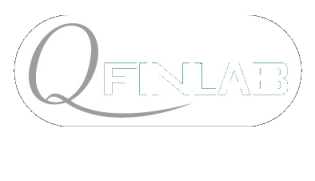Virtual room: Click here to access the Zoom Virtual Room, or insert the Meeting id on your Zoom app: 826 4084 3401
Polimi Fintech Series – Jeremy D. Turiel – December 09, 2020
Polimi Fintech Series – Emilio Barucci – November 09, 2020
Virtual room: Click here to access the Zoom Virtual Room, or insert the Meeting id on your Zoom app: 872 7241 8663
Polimi Fintech Series
Featuring contributions from both leading academics and practitioners, the series, under the fintech-ho2020.eu and the Cost Fin-AI.eu project, will explore challenges facing Fintech today. Guided by the expertise of QFinLab, this seminar series will provide a forum for discussion over technology applied to financial industry.
To stay updated with latest news on QFinLab seminars subscribe here: https://bit.ly/2TNtC6e
The first appointment with Polimi Fintech Series, on November 9th 2020 at 17.30 Italian time, will host Emilio Barucci (Politecnico di Milano) presenting
Conference Big Data and Machine Learning in Finance
www.mate.polimi.it/fintech
June 10-11, 2021 – Online Conference
Big Data and Machine Learning are driving a significant transformation in the financial industry. Amazing examples include: robo-advisory; predicting frauds in payment systems; development of sophisticated algorithmic trading strategies; systemic risk assessment; rating of companies/financial products using a huge amount of information; development of chatbots for customers; nowcasting of financial time series; digital marketing; instant pricing of insurance products.
The transformation concerns the academia and the financial industry. The goal of the conference is to bring together academicians with different backgrounds (economists, finance experts, data scientists, econometricians) and representatives of the financial industry (banks, asset management, insurance companies) working in this field.
Papers on all areas dealing with Machine Learning and Big Data in finance (including Natural Language Processing and Artificial Intelligence techniques) are welcomed. The conference targets papers with different angles (methodological and applications to finance).
Invited speakers:
- Tomaso Aste (University College London)
- Emanuele Borgonovo (Università Bocconi)
- Tucker Balch (JP Morgan AI research)
- Juri Marcucci (Bank of Italy)
- Georgios Sermpinis (Adam Smith Business School, University of Glasgow)
For information: www.mate.polimi.it/fintech
Seminar Niklas Wagner – May 12, 2020
Niklas Wagner (Passau University)
Give Me a Break: Is the Equity Premium a Trading Break Premium?
May 12, 2020 – 12.30
Abstract
This paper addresses the relation between market risk and expected market returns under periodic trading breaks. We propose a model where asset prices are driven by a diffusion process that operates during the trading day and a separate process that captures overnight price changes. Our empirical analysis shows that both components are important in explaining the equity market risk premium.
Trading breaks entail a lack of market functionality and liquidity and our results reveal that investors ask for a premium to hold the market portfolio overnight. Including additional state variables into the model, we find that uncertainty risk and illiquidity risk are both priced as well.

